Live, fires: two fires still active, in Gard and Aude, the one near Marseille is "in very clear decline"

Ask your question to the editorial staff:
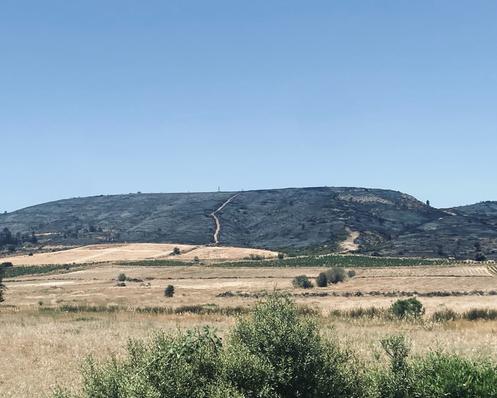
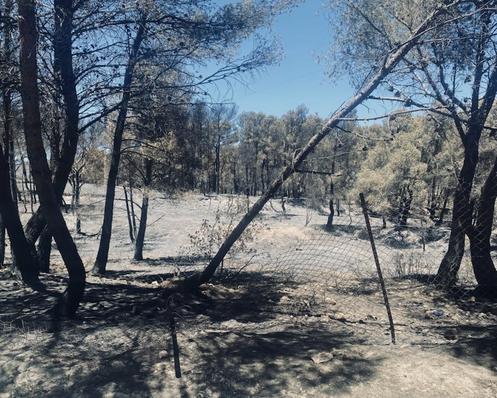
The Narbonne fire "has clearly decreased in intensity. (…) We are seeing a favorable trend, which is nevertheless critical and about which we are being cautious," declared Colonel Christophe Magny, commander of the Aude Departmental Fire and Rescue Service (SDIS), reports Agence France-Presse.
The fire, which has covered some 2,000 hectares since Monday , is still active, "extending over two kilometers" , and "the risks of reactivation" over the 2,000 hectares covered, "remain sensitive to the shift in wind and the very dry weather" expected "this afternoon and tomorrow" , added the colonel.
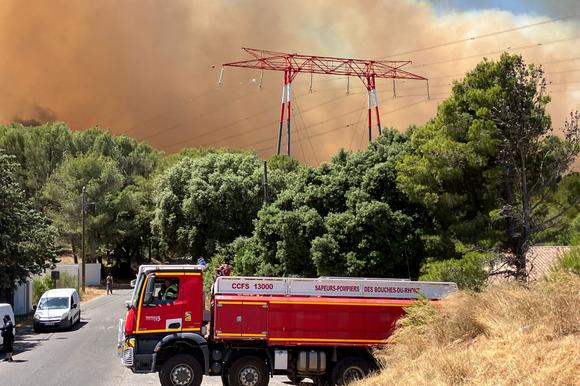 Firefighters13/via REUTERS
Firefighters13/via REUTERSWith 7,000 hectares already gone up in smoke and 5,900 fires recorded since the beginning of the year, most of them since June, the fire season in France has started very early and very strongly. In a context of severe drought, the summer promises to be a high-risk one.
No information on air quality in Marseille was available Wednesday morning, due to the "evacuation of the data center," AtmoSud reported. But as of Tuesday and the outbreak of the fire near Marseille, the plume of smoke released caused a concentration of fine particles ten times higher than the norm in Marseille and extended out to sea for around 100 kilometers, according to satellite images.
If you're near a fire-affected area, the best thing to do is stay indoors, with the windows closed, and a fan to circulate the air if possible. And wear an FFP2 mask if you have to go outside. A few common-sense recommendations: avoid outdoor sports and strenuous exercise.
The fire, which has covered some 2,000 hectares in the Aude region since Monday, remains active on Wednesday but no longer poses a risk to inhabited areas, the Aude prefect, Christian Pouget, told Agence France-Presse.
"The fire is no longer threatening homes (near Narbonne). (…) The fire is not contained or under control. We are still working on it with a lower intensity than what we have seen in recent days," he said late in the morning.
The response force was reduced to around 300 firefighters on Wednesday, compared to 1,000 on Monday and Tuesday. Water-bombing planes and helicopters continue to support the firefighters' ground work. "It's a fire that stretches 10 kilometers long and has a circumference of 25 kilometers, there are hot spots that reactivate regularly, which must be dealt with," added Mr. Pouget.
Thousands of residents of Narbonne and the neighboring towns of Bages and Peyriac-de-Mer were ordered to stay indoors Monday afternoon as the fire approached the town of 50,000. The final lockdown measures were lifted Tuesday evening.
Homes in the commune of Bages were partially damaged by the fire, while a stable was destroyed. Firefighters predict that the fight against the blaze will last several more days until it is brought under control. In this department, which has been hit by drought in recent years and a heatwave this spring, extinguishing the fire is also being made difficult by the strong northwestern wind, the tramontane.
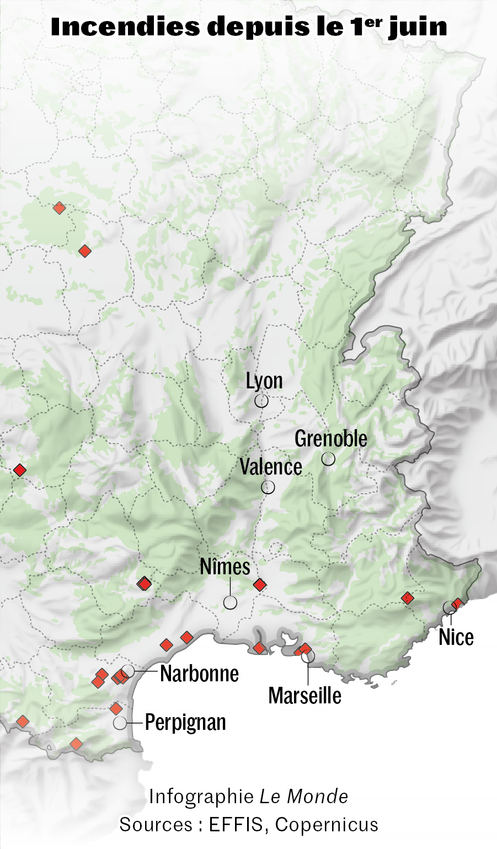
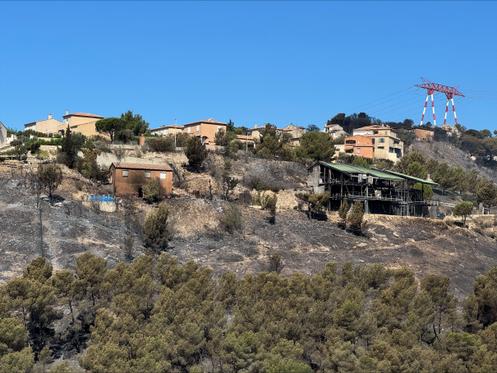
The prefect of Bouches-du-Rhône announced in a press release that 249 people "have been received at the victims' assembly point" since the start of the fire in Pennes-Mirabeau and Marseille on Tuesday. Among them, 206 were unharmed, but 43 were slightly injured, 16 of whom were "transported to local hospitals."
Furthermore, 28 firefighters, 11 marine firefighters and 17 members of the SDIS were slightly injured during their interventions near the flames, six of whom were taken to hospital. Finally, "26 police officers were slightly injured, mainly from smoke inhalation, two of whom [were hospitalized]. "
1 account from €7.99/month
No commitment
- All our articles, videos, podcasts and newsletters
- The La Matinale du Monde application, from 7 a.m., the editorial team's selection of articles
- The daily newspaper in digital version from 1 p.m.
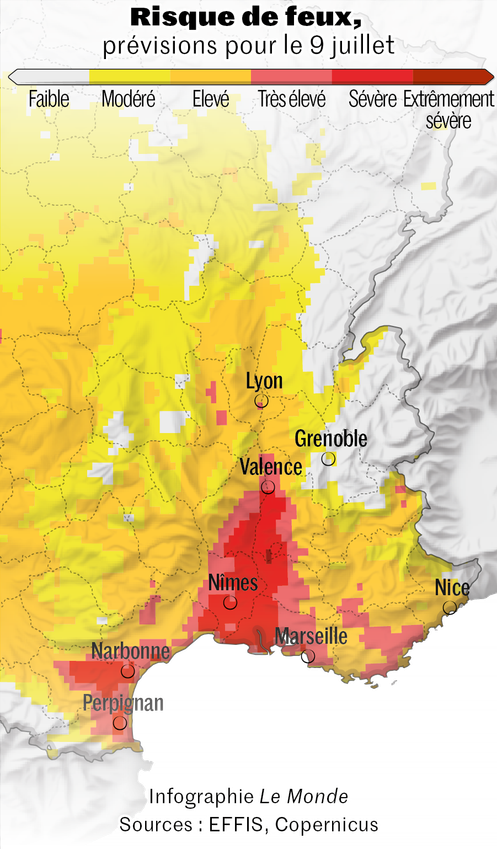
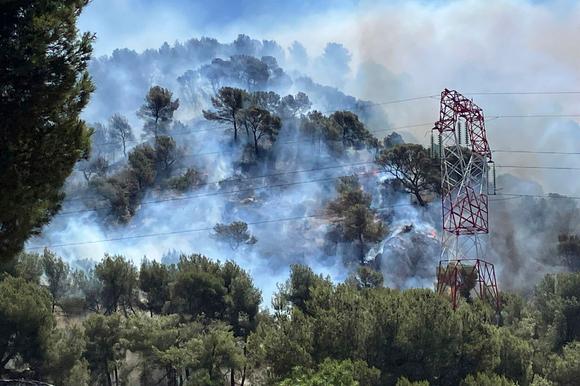 Photo provided by the SDIS13/AP firefighters
Photo provided by the SDIS13/AP firefightersFrançois Pimont, a research engineer and head of the Fire Physics and Ecology team within the Mediterranean Forest Ecology Unit at the French National Institute for Agricultural, Food, and Environmental Research (INRAE) in Avignon, models the fires that will affect France in the coming decades. As a result of global warming, they will become more numerous in already exposed regions and will spread. The season will also be longer.
The 15,000 residents of Marseille's 16th arrondissement were released from lockdown early Wednesday morning, while the vast fire that broke out on Tuesday "is in very clear decline" but has not been stopped .
They had been confined on Tuesday around 4 p.m. as the fire reached their neighborhood, all warned on their phones by the FR.alert system. The residents of Pennes-Mirabeau, where the fire started, have also been released from confinement.
The residents of Pennes-Mirabeau are out of lockdown, the Provence-Alpes-Côte-d'Azur regional prefecture announced in a press release broadcast on X. Furthermore, 400 people were evacuated due to the fire, including 71 residents of a nursing home in Pennes-Mirabeau, Interior Minister Bruno Retailleau announced on Tuesday evening.
On the road, traffic is also expected to resume in the morning on the A55, towards Marseille, and it is "expected" in the other direction. On the A7 motorway, towards Aix-en-Provence and Lyon, "two lanes should be protected for emergency services in the Lyon-Marseille direction," the Bouches-du-Rhône prefecture stated in the morning.
On the rail side, TGV trains in Marseille have resumed since 6 a.m., but TER trains on the Marseille-Miramas line are still interrupted until noon via Côte Bleue and Rognac.
I imagine you're referring to Marseille-Provence Airport, located on the banks of the Étang de Berre in Marignane, where traffic was also suspended at midday on Tuesday due to the massive fire at the gates of Marseille, leading to the cancellation of more than 110 flights. Four planes were diverted mid-air, three to Nice and one to Montpellier.
Marseille-Provence Airport announced the full resumption of traffic on Wednesday morning, after partially resuming operations at nightfall on Tuesday. Passengers are encouraged to contact their airline for information on their flight departure times.
However, "the situation may change depending on the air needs to be put in place to fight the fire," said an airport spokesperson, reports La Provence .
The government is seeking to "protect new means" against fires, its spokesperson, Sophie Primas, assured on RTL on Wednesday , despite the intense effort to reduce public spending that it has undertaken, and while firefighters continue to fight several fires in the south of France.
"The Interior Minister said he would try to rearm France, particularly [regarding] aircraft capable of sending fire suppression systems," said Sophie Primas. "We have ordered two Canadairs and I hope we can order two more," announced Interior Minister Bruno Retailleau on Tuesday, during an emergency trip to Marseille.
Prime Minister François Bayrou will present a public finance recovery plan next Tuesday that is expected to save 40 billion euros by 2026.
"We must not preserve the budget [to fight the fires], we must increase it," declared the chairman of the National Assembly's finance committee, Eric Coquerel (LFI), on Sud Radio . He considered that the fleet was insufficient to face the risk of fires during the summer in several regions of the country.
"There is every reason to believe that we are heading towards a high-risk summer," Bruno Retailleau acknowledged on Tuesday, noting the precocity of these large-scale fires in the south of France.
In an information report filed at the beginning of July and presented by MPs Damien Maudet (LFI) and Sophie Pantel (PS), the age of the aircraft used to fight the flames is highlighted. "The most critical situation is that of the Canadairs, whose average age is now 30 years," they write, specifying that an operation to renew some of them is underway.
The average age of the Beechcraft, 45 years, "makes it necessary" to "replace them quickly," the report adds. The two oldest Dash aircraft have an average age of 20 years, while the other six are between 2 and 6 years old. While these aircraft are "particularly suited" to attacking nascent fires, they must be recharged on the ground, limiting "their tactical use on certain fires," the text notes.
The fire that broke out on Tuesday afternoon in Montdardier, in the Gard , has now covered "around 500 hectares of vegetation, scrub and broadleaf trees" , the Gard departmental fire and rescue service (SDIS) announced in a press release on Wednesday morning.
The fire, which caused "no casualties or damage to infrastructure or homes," has spread to the neighboring town of Rogues, "which is safe," he explained. But "the difficulties of accessing land resources make this site complex" and "the fire is still evolving and is not under control," the firefighters estimate.
"More than 160 men" and around fifty vehicles are currently engaged. A heavy water bombing helicopter and a specialized intervention detachment "are expected in the morning to assist the ground troops who must lay hundreds of meters of pipes," according to the press release.
The Gard firefighters believe that the continuation of the work to extinguish this fire "will be long-term and will last all day and into the next night" , the return of the wind being an "unfavorable factor" .
"The fire that broke out on July 7 in Narbonne is still active, particularly on the left rear plane," while "the weather conditions for the day remain uncertain," warned the Aude prefect in a statement providing an update on the situation at 9 a.m.
According to the departmental prefecture, " fires reignited during the night and were brought under control by firefighters who are continuing to deal with them with the support of two water-bombing helicopters."
Traffic resumed on the A9 motorway on Tuesday, with only the Prat-de-Cest and Bages rest areas remaining closed.
In Castelnau-de-Guers and Montagnac, in Hérault, "the fire was contained around 5 a.m. this morning thanks to the mobilization, all night long, of 417 firefighters and 130 forest fire and firefighting vehicles. The fire covered a distance of 3.5 kilometers, an area of 700 hectares and [has] burned approximately 400 hectares. No injuries or victims to report," announced the Hérault prefecture, in a press release which gave an update at 7:45 a.m.
"Cleaning and treatment operations on the edges will continue throughout the day and into the night to completely extinguish the fire," added the prefect.
The A9 motorway, a key route between the Rhône Valley and Spain, was reopened to traffic on Tuesday evening "thanks to the combined action of land and air resources" which helped contain the fire, firefighters confirmed.
Since 8 a.m., drones equipped with thermal detection cameras have been deployed to "map hot spots," the SDIS also announced, predicting that "flooding and edge treatment operations will continue throughout the day and into the night."
"The fire is clearly in decline, but it is clear that with such a large fire, over such a large area, there can be new outbreaks, jumps, and fumaroles," said Georges-François Leclerc, Prefect of Bouches-du-Rhône, on Wednesday morning, during a press briefing. Firefighters therefore remain fully mobilized to prevent further outbreaks of fire and contain the flames.
The prefect specified that a comprehensive material and human toll should be carried out by the end of the morning, but that for the moment at least 70 houses "have been affected", including "ten destroyed". The fire has not caused any casualties so far, apart from a few minor injuries, mainly firefighters and police officers.
A support system for victims is under consideration, he further stated, accompanied by Marseille Mayor Benoît Payan. Local stakeholders, including the metropolitan area and the city, will meet tomorrow to define guidelines.
Firefighters expect "a return of the wind in the afternoon, even if it will be moderate compared to yesterday," Vice Admiral Lionel Mathieu then explained, adding that "750 hectares have been set ablaze."
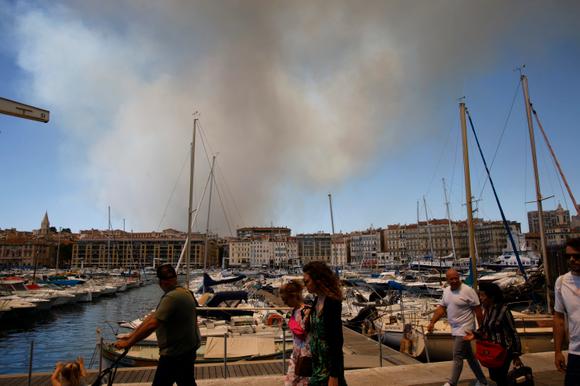 FRANCK PENNANT/LA PROVENCE /MAXPPP
FRANCK PENNANT/LA PROVENCE /MAXPPPAt 1 p.m. on Tuesday, July 8, in a light that suddenly turned yellow, ashes began to rain down on the city center of Marseille. A concrete and very spectacular consequence of the major fire that had been ravaging several hundred hectares to the north of the city for two hours. A fire that came to lick the urban areas of Estaque, Saint-Henri and Saint-André, coastal neighborhoods in the 16th arrondissement of Marseille, and which was spreading extremely "quickly," as explained by the Minister of the Interior, Bruno Retailleau, who arrived in Marseille at 10 p.m. for a one-hour visit.
Le Monde






